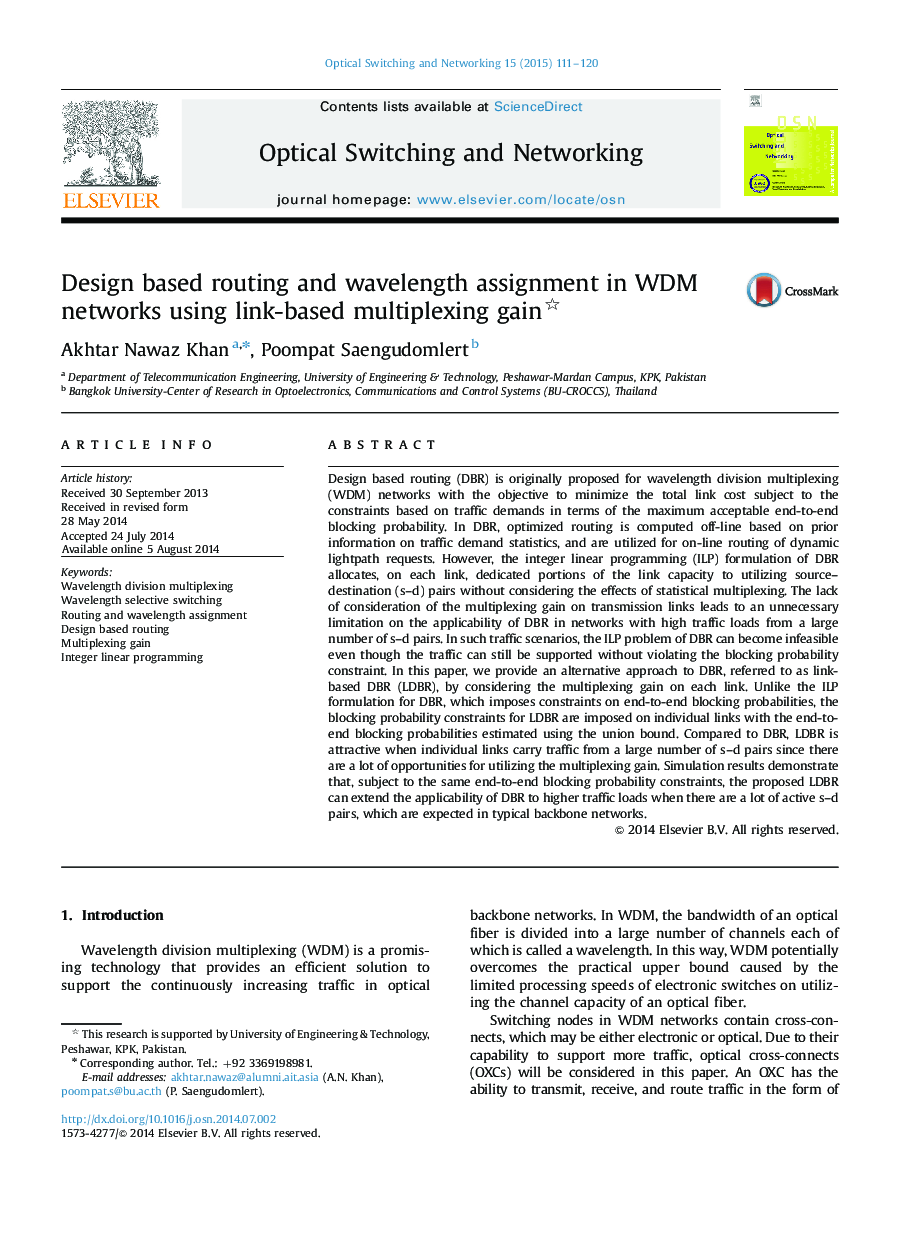| Article ID | Journal | Published Year | Pages | File Type |
|---|---|---|---|---|
| 464397 | Optical Switching and Networking | 2015 | 10 Pages |
Design based routing (DBR) is originally proposed for wavelength division multiplexing (WDM) networks with the objective to minimize the total link cost subject to the constraints based on traffic demands in terms of the maximum acceptable end-to-end blocking probability. In DBR, optimized routing is computed off-line based on prior information on traffic demand statistics, and are utilized for on-line routing of dynamic lightpath requests. However, the integer linear programming (ILP) formulation of DBR allocates, on each link, dedicated portions of the link capacity to utilizing source–destination (s–d) pairs without considering the effects of statistical multiplexing. The lack of consideration of the multiplexing gain on transmission links leads to an unnecessary limitation on the applicability of DBR in networks with high traffic loads from a large number of s–d pairs. In such traffic scenarios, the ILP problem of DBR can become infeasible even though the traffic can still be supported without violating the blocking probability constraint. In this paper, we provide an alternative approach to DBR, referred to as link-based DBR (LDBR), by considering the multiplexing gain on each link. Unlike the ILP formulation for DBR, which imposes constraints on end-to-end blocking probabilities, the blocking probability constraints for LDBR are imposed on individual links with the end-to-end blocking probabilities estimated using the union bound. Compared to DBR, LDBR is attractive when individual links carry traffic from a large number of s–d pairs since there are a lot of opportunities for utilizing the multiplexing gain. Simulation results demonstrate that, subject to the same end-to-end blocking probability constraints, the proposed LDBR can extend the applicability of DBR to higher traffic loads when there are a lot of active s–d pairs, which are expected in typical backbone networks.
